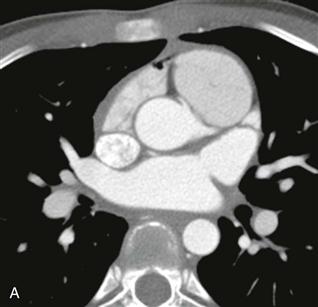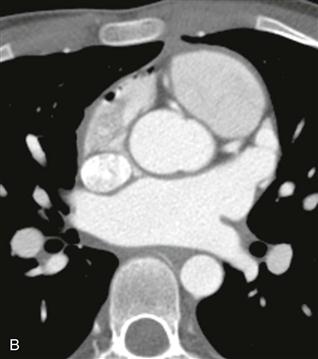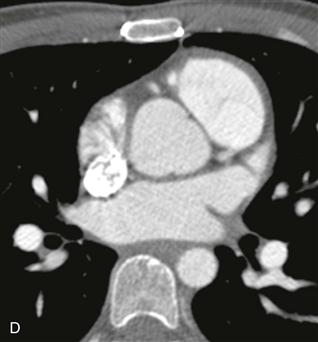CASE 24




1. What are potential paths of an anomalous coronary artery? (Choose all that apply.)
A. Retroaortic
B. Prepulmonic
C. Septal
2. Which of the following best characterizes the course of the right coronary artery?
A. Retroaortic
B. Prepulmonic
C. Septal
3. If this patient had inferior myocardial ischemia on stress testing, what would be the best next step in management?
A. Surgery
B. Stenting
4. What has occurred between Figs. A and B and Figs. C and D?
A. Stenting
C. Bypass graft
D. Angioplasty
ANSWERS
Reference
Young PM, Gerber TC, Williamson EE, et al. Cardiac imaging: part 2, normal, variant, and anomalous configurations of the coronary vasculature. AJR Am J Roentgenol. 2011;197(4):816–826.
Cross-Reference
Cardiac Imaging: The REQUISITES, ed 3, pp 225–228.
Comment
Imaging
The right coronary artery originates from the left coronary sinus of Valsalva and travels between the pulmonary artery and the aorta in a so-called malignant course (Figs. A and B). This patient was treated successfully with surgical reimplantation of the right coronary artery to the right coronary cusp (Figs. C and D).
Overview
Ectopic origin of a coronary artery is the most frequently encountered coronary artery anomaly. Certain forms are benign and are not associated with an increased risk of sudden cardiac death. The interarterial course, as shown in this case, has an increased risk of angina, arrhythmia, myocardial ischemia, and sudden cardiac death. It generally requires surgical correction. Bypass graft surgery, unroofing, and reimplantation of the anomalous vessel are the available surgical options at the present time. This patient was treated with reimplantation surgery given her age at diagnosis. Coronary angiography can detect an anomalous vessel but cannot identify the course and relationship to the pulmonary artery and aorta. CT angiography guides management because it depicts the course of the vessel.







